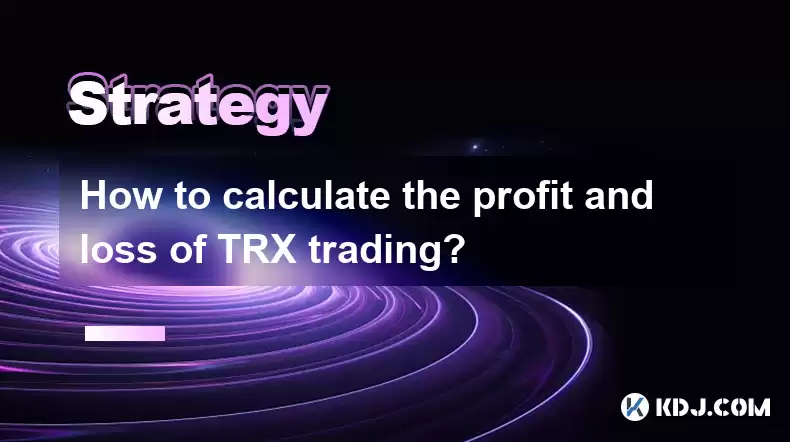-
 Bitcoin
Bitcoin $114500
-0.31% -
 Ethereum
Ethereum $3648
1.11% -
 XRP
XRP $3.033
-0.27% -
 Tether USDt
Tether USDt $0.9999
-0.01% -
 BNB
BNB $758.5
-0.32% -
 Solana
Solana $167.5
1.48% -
 USDC
USDC $0.9998
-0.02% -
 TRON
TRON $0.3331
0.74% -
 Dogecoin
Dogecoin $0.2039
0.25% -
 Cardano
Cardano $0.7419
-0.46% -
 Hyperliquid
Hyperliquid $39.21
2.66% -
 Stellar
Stellar $0.4049
-1.95% -
 Sui
Sui $3.483
-0.56% -
 Bitcoin Cash
Bitcoin Cash $570.8
2.89% -
 Chainlink
Chainlink $16.67
-0.57% -
 Hedera
Hedera $0.2470
-1.57% -
 Ethena USDe
Ethena USDe $1.001
0.00% -
 Avalanche
Avalanche $22.36
1.52% -
 Litecoin
Litecoin $123.4
4.35% -
 UNUS SED LEO
UNUS SED LEO $8.989
0.09% -
 Toncoin
Toncoin $3.324
-2.40% -
 Shiba Inu
Shiba Inu $0.00001219
-1.30% -
 Uniswap
Uniswap $9.811
2.54% -
 Polkadot
Polkadot $3.662
-0.07% -
 Monero
Monero $295.5
-3.85% -
 Dai
Dai $1.000
0.01% -
 Bitget Token
Bitget Token $4.345
0.24% -
 Cronos
Cronos $0.1380
0.95% -
 Pepe
Pepe $0.00001044
-1.14% -
 Ethena
Ethena $0.5981
-4.24%
How to calculate the profit and loss of TRX trading?
To calculate TRX trading profit, subtract total purchase cost from total sales revenue; for loss, subtract revenue from cost, considering transaction fees.
Apr 22, 2025 at 04:36 am

Trading TRX, or Tron, like any other cryptocurrency, involves understanding how to calculate profit and loss to manage your investments effectively. This article will guide you through the process of calculating your TRX trading profit and loss, ensuring you have a clear understanding of your financial performance.
Understanding the Basics of TRX Trading
Before diving into calculations, it's crucial to understand the basic terminology involved in TRX trading. Profit is the amount of money you earn from a trade, while loss is the amount you lose. The purchase price is the price at which you buy TRX, and the selling price is the price at which you sell it. Additionally, volume refers to the number of TRX coins you are trading.
Calculating Profit in TRX Trading
To calculate the profit from your TRX trading, you need to follow a simple formula. The profit is calculated by subtracting the total cost of the TRX you purchased from the total revenue you received when you sold it. Here’s how you can do it:
- Determine the total cost of your purchase: Multiply the purchase price by the volume of TRX you bought.
- Determine the total revenue from your sale: Multiply the selling price by the volume of TRX you sold.
- Calculate the profit: Subtract the total cost from the total revenue.
For example, if you bought 1000 TRX at $0.05 each and sold them at $0.07 each, your calculations would be as follows:
- Total cost = 1000 TRX $0.05 = $50
- Total revenue = 1000 TRX $0.07 = $70
- Profit = $70 - $50 = $20
Calculating Loss in TRX Trading
Calculating loss follows a similar process to calculating profit, but the result will be negative. The loss is calculated by subtracting the total revenue from the total cost. Here’s how you can do it:
- Determine the total cost of your purchase: Multiply the purchase price by the volume of TRX you bought.
- Determine the total revenue from your sale: Multiply the selling price by the volume of TRX you sold.
- Calculate the loss: Subtract the total revenue from the total cost.
For example, if you bought 1000 TRX at $0.07 each and sold them at $0.05 each, your calculations would be as follows:
- Total cost = 1000 TRX * $0.07 = $70
- Total revenue = 1000 TRX * $0.05 = $50
- Loss = $50 - $70 = -$20
Using Percentage to Measure Profit and Loss
Sometimes, it's useful to express your profit or loss as a percentage of your initial investment. This helps in comparing the performance of different trades or investments. Here’s how to calculate the percentage profit or loss:
- Percentage profit: Divide the profit by the total cost and multiply by 100.
- Percentage loss: Divide the loss by the total cost and multiply by 100.
Using the previous examples:
- Percentage profit = ($20 / $50) 100 = 40%
- Percentage loss = (-$20 / $70) 100 ≈ -28.57%
Considering Transaction Fees and Other Costs
When calculating profit and loss, it's important to factor in any transaction fees and other costs associated with buying and selling TRX. These costs can significantly impact your net profit or loss. Here’s how to include them in your calculations:
- Add transaction fees to the total cost: If you paid a fee to buy TRX, add this fee to the total cost.
- Subtract transaction fees from the total revenue: If you paid a fee to sell TRX, subtract this fee from the total revenue.
For example, if you bought 1000 TRX at $0.05 each and paid a $1 fee, and sold them at $0.07 each with a $1 fee:
- Total cost = (1000 TRX * $0.05) + $1 = $51
- Total revenue = (1000 TRX * $0.07) - $1 = $69
- Profit = $69 - $51 = $18
Using Trading Platforms to Track Profit and Loss
Many trading platforms offer tools to help you track your profit and loss automatically. Here’s how you can use these tools:
- Log into your trading account: Access your account on the trading platform where you bought and sold TRX.
- Navigate to the transaction history: Find the section where all your transactions are listed.
- Review your trades: Look at each trade to see the purchase and selling prices, volumes, and any fees.
- Use the platform’s profit and loss calculator: Many platforms have built-in calculators that automatically compute your profit and loss based on your transaction history.
Frequently Asked Questions
Q: How can I minimize my losses when trading TRX?
A: To minimize losses, consider setting stop-loss orders, which automatically sell your TRX if the price drops to a certain level. Additionally, diversify your investments and stay informed about market trends and news that could affect TRX prices.
Q: Can I use leverage to increase my potential profit when trading TRX?
A: Yes, you can use leverage to potentially increase your profits, but it also increases your risk of significant losses. It's important to understand the risks involved and use leverage cautiously.
Q: How often should I review my TRX trading performance?
A: It's a good practice to review your trading performance regularly, such as weekly or monthly, to track your progress and adjust your strategies as needed. Regular reviews help you stay on top of your investments and make informed decisions.
Q: Are there any tax implications when trading TRX?
A: Yes, trading TRX can have tax implications depending on your country's regulations. Profits from trading may be subject to capital gains tax, and you should consult with a tax professional to understand your specific obligations.
Disclaimer:info@kdj.com
The information provided is not trading advice. kdj.com does not assume any responsibility for any investments made based on the information provided in this article. Cryptocurrencies are highly volatile and it is highly recommended that you invest with caution after thorough research!
If you believe that the content used on this website infringes your copyright, please contact us immediately (info@kdj.com) and we will delete it promptly.
- Altcoin Alert: Is Punisher Coin the Presale to Pounce On?
- 2025-08-06 06:50:11
- XRP Price, Bitwise, and the 2030 Forecast: Will XRP Hit the Big Time?
- 2025-08-06 06:50:11
- Ruvi AI: The AI Token Primed for CMC Listing and Explosive Growth
- 2025-08-06 06:30:13
- Michigan Pension, Bitcoin ETF, and Institutional Investment: A New Era?
- 2025-08-06 07:10:11
- Verb Technology's Bold Move: Acquisition, Rebranding, and a $558M Bet on Toncoin
- 2025-08-06 07:30:12
- Sushi's Sizzling Summer: AMA on August 6th & Market Moves!
- 2025-08-06 06:30:13
Related knowledge

How to avoid common crypto investment mistakes?
Jul 13,2025 at 01:35am
Understanding the Risks of Crypto InvestmentInvesting in cryptocurrency can be highly rewarding, but it also comes with significant risks. One of the ...

What is a long-short crypto strategy?
Jul 15,2025 at 10:56am
Understanding the Basics of a Long-Short Crypto StrategyA long-short crypto strategy is an investment approach where traders simultaneously take long ...

What is a long-short crypto strategy?
Jul 11,2025 at 01:28pm
Understanding the Basics of Long-Short Crypto StrategyA long-short crypto strategy is an investment approach where traders take both long and short po...

How to use the RSI indicator for crypto?
Jul 12,2025 at 03:56pm
Understanding the RSI Indicator in Cryptocurrency TradingThe Relative Strength Index (RSI) is a momentum oscillator used to measure the speed and chan...

Is copy trading a good strategy for crypto beginners?
Jul 12,2025 at 08:28am
Understanding Copy Trading in the Cryptocurrency MarketCopy trading is a strategy where novice traders replicate the trades of experienced investors a...

How to build a crypto portfolio with $1000?
Jul 13,2025 at 08:14pm
Understanding the Basics of Cryptocurrency InvestmentBuilding a crypto portfolio with $1000 starts with understanding the fundamentals of cryptocurren...

How to avoid common crypto investment mistakes?
Jul 13,2025 at 01:35am
Understanding the Risks of Crypto InvestmentInvesting in cryptocurrency can be highly rewarding, but it also comes with significant risks. One of the ...

What is a long-short crypto strategy?
Jul 15,2025 at 10:56am
Understanding the Basics of a Long-Short Crypto StrategyA long-short crypto strategy is an investment approach where traders simultaneously take long ...

What is a long-short crypto strategy?
Jul 11,2025 at 01:28pm
Understanding the Basics of Long-Short Crypto StrategyA long-short crypto strategy is an investment approach where traders take both long and short po...

How to use the RSI indicator for crypto?
Jul 12,2025 at 03:56pm
Understanding the RSI Indicator in Cryptocurrency TradingThe Relative Strength Index (RSI) is a momentum oscillator used to measure the speed and chan...

Is copy trading a good strategy for crypto beginners?
Jul 12,2025 at 08:28am
Understanding Copy Trading in the Cryptocurrency MarketCopy trading is a strategy where novice traders replicate the trades of experienced investors a...

How to build a crypto portfolio with $1000?
Jul 13,2025 at 08:14pm
Understanding the Basics of Cryptocurrency InvestmentBuilding a crypto portfolio with $1000 starts with understanding the fundamentals of cryptocurren...
See all articles

























































































